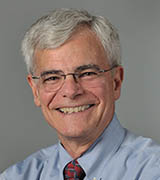From the Deputy Director for Intramural Research
Saluting the Unseen NIH Heroes Among Us

Michael Gottesman
The NIH is a city unto itself. The Bethesda campus alone is home to more than 30,000 NIH citizens. So, when the COVID-19 pandemic hit in March 2020 and threatened our ability to conduct research, simply shutting down the NIH was not an option. As in New York, the famed city that never sleeps, hundreds of our colleagues sprang to work to ensure that the rest of us could perform our duties remotely and, if allowed, enter our workplace safely.
I speak of the animal caretakers, security guards and police, IT support, cleaning staff, health care workers, food service providers, and many others who were very much on the frontlines, reporting to the physical workplace at the height of the pandemic at no small risk to their own health. We owe these colleagues our deep gratitude. They rose to the occasion in ways many of us may not fully realize.
Consider NIH Security. To account for personnel shortages, the security team needed to switch from three 8-hour shifts to two 12-hour shifts, all while still processing an average 6,550 visitors and 3,524 patients per month. The NIH Police were exceptionally busy as well. Since the start of the pandemic, there have been 15 demonstrations on or near NIH property, compared with the one or two we normally experience per year. These required them to operate with heightened vigilance. Even the dogs had their paws full. K9 teams conducted more than 1,000 building patrols necessitated by the sparse activity on campus.
Our animal-care staff also faithfully reported to work at facilities on the main campus in Bethesda, at Research Triangle Park in North Carolina, and at Rocky Mountain Labs in Hamilton, Montana. They had a pressing task of global importance in supporting animals used in vaccine development and related COVID-19 research. They also were busy keeping novel animal lines healthy for that day when we would all return to the labs. They, too, were stretched thin as many needed to enter quarantine and could not report to work during times when a “close contact” contracted COVID-19, transferring the burden of labor to colleagues, sometimes in other buildings.
The cleaning crew struggled similarly through quarantine-triggered staff shortages. Yet they were essential in our decision early into the pandemic to allow for laboratory shift work. We knew we could count on them to clean between shifts, and we factored in their dependability into our decision to reopen labs in mid-2020.
The facilities staff performed admirably as well in multiple ways. In addition to providing continuation of basic services such as water, steam, and heat, they were called upon to alter air flow in buildings and construct physical barriers to help keep SARS-CoV-2 from spreading. On top of this, they pushed through the pandemic to make astounding progress on key construction projects, such as the TIL Cell Processing Modular Facility, the Center for Alzheimer’s and Related Dementias, and the Central Utility Plant.
Behind the scenes, more than 200 of your colleagues volunteered to be part of the COVID-19 response teams, comprising the Call Center, Contact Investigations, and the Occupational Medical Services Return-to-Work teams. From March to October 2020, most were working out of FAES classrooms in Building 10. Collectively, they interacted by phone with thousands of people who had been in contact with the more than 1,600 NIH employees who have been infected with COVID-19. This was important but often stressful work. Additionally, NIH personnel and others recruited from the U.S. Public Health Service staffed both the symptomatic and asymptomatic testing stations and then the COVID-19 vaccination booths.
And let’s never forget the very foundation we all relied upon these past 18 months: the NIH network. IT staff in the Center for Information Technology, Office of Research Services, Office of Research Facilities, and in your own institutes and centers toiled to strengthen the NIH network to enable remote work. They developed creative solutions to keep a diverse workforce fully connected via Webex, Teams, Zoom, VideoCast, and other tools that were new to most of us.
‘Tis the season for thanks. NIH Director Francis Collins is on a “gratitude tour” to express his admiration for these and other staff who have kept the NIH research enterprise alive and well. When we return to our labs and office, let’s also give them a big thanks for their giving.
This page was last updated on Monday, January 31, 2022
